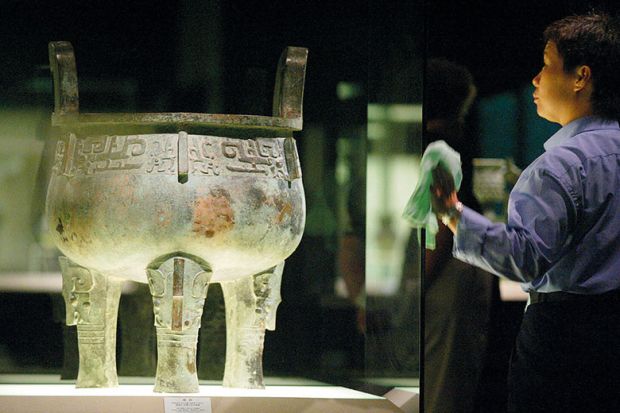In this remarkable book, Roel Sterckx – Joseph Needham professor of Chinese history, science and civilisation at the University of Cambridge – considers ancient ideas that will surprise and please China scholars, while writing in an everyday style to inform those new to Chinese history. His striking achievement is to show how some of the most ancient Chinese ideas, ideals and propositions, reaching back millennia, were embraced in the 20th century by Mao Zedong and remain alive and potent in how the country is governed today.
The introduction alone is invaluable, learned and accessible. After this, Sterckx explores subjects such as the individual and the collective, behaving well, work and wealth, and the art of government, all of which extend far back in time but echo or remain prescriptive today.
I began studying Chinese history in 1955, taught by leading historians. I now realise how disconnected their teaching of traditional periods was from contemporary “political science”.
Here is Sterckx’s most valuable and convincing proposition: “Ancient China produced a chain of ideas that was to inform the way in which the Chinese have viewed the world ever since.” I recall examining the piles of books next to Mao’s bed after he died, impressed by their variety and often antiquity. Sterckx observes that he drew on the image of ancient China’s roaming debaters to launch his Hundred Flowers campaign in 1955, only to abort this short-lived movement when he concluded “that the criticism offered was unhealthy and damaging to his authority”. So too “the notion that power should issue from and reside in one individual or institution reverberates up until today” – a fact hammered home by Xi Jinping, who has had himself proclaimed president for life, the single all-powerful leader who is the traditional and contemporary political ideal.
Another ancient conviction, carried down into today’s China, is that prominent officials are not averse to publicly practising calligraphy, poetry and landscape painting. Those of us studying China in the late 1950s and visiting the country while Mao was still smashing much of the cultural past admired his skills with a brush and in ancient forms of poetry.
Yet another ancient idea, proclaimed at enormous gatherings of the Communist Party elite, is the conviction that China is a series “of concentric circles in which the centre is seen to radiate influence into the periphery, at home and then abroad, materially, physically, and ethically”. This is plain as China extends its influence into the wider Pacific zone and then as a friend in regions as far away as Africa, with a world outside viewed as a graded zone of waning degrees of civilisation. Such expansion was accompanied by the conviction, Sterckx explains, that “those who refuse to be transformed by the civilizing influence of Chinese power are bound ‘to fall off the map’”.
“Cooking provides a perfect metaphor for governance,” notes Sterckx, plunging into the traditional past. In an ancient text, a ruler discusses skill and harmony with Cook Ding, who was adeptly chopping up an ox with little effort. Today Xi, who imprisons dissidents and sweeps up hundreds of thousands of Muslims, contends that “good politics resembles the art of mixing a stew into a harmonious blend so as to ‘eliminate contradictions and divergence’”.
Jonathan Mirsky was formerly associate professor of Chinese history and comparative literature at Dartmouth College in the US.
Chinese Thought from Confucius to Cook Ding
By Roel Sterckx
Pelican, 512pp, £20.00
ISBN 9780241385906
Published 28 March 2019
后记
Print headline: Party still fed by ancient recipes




